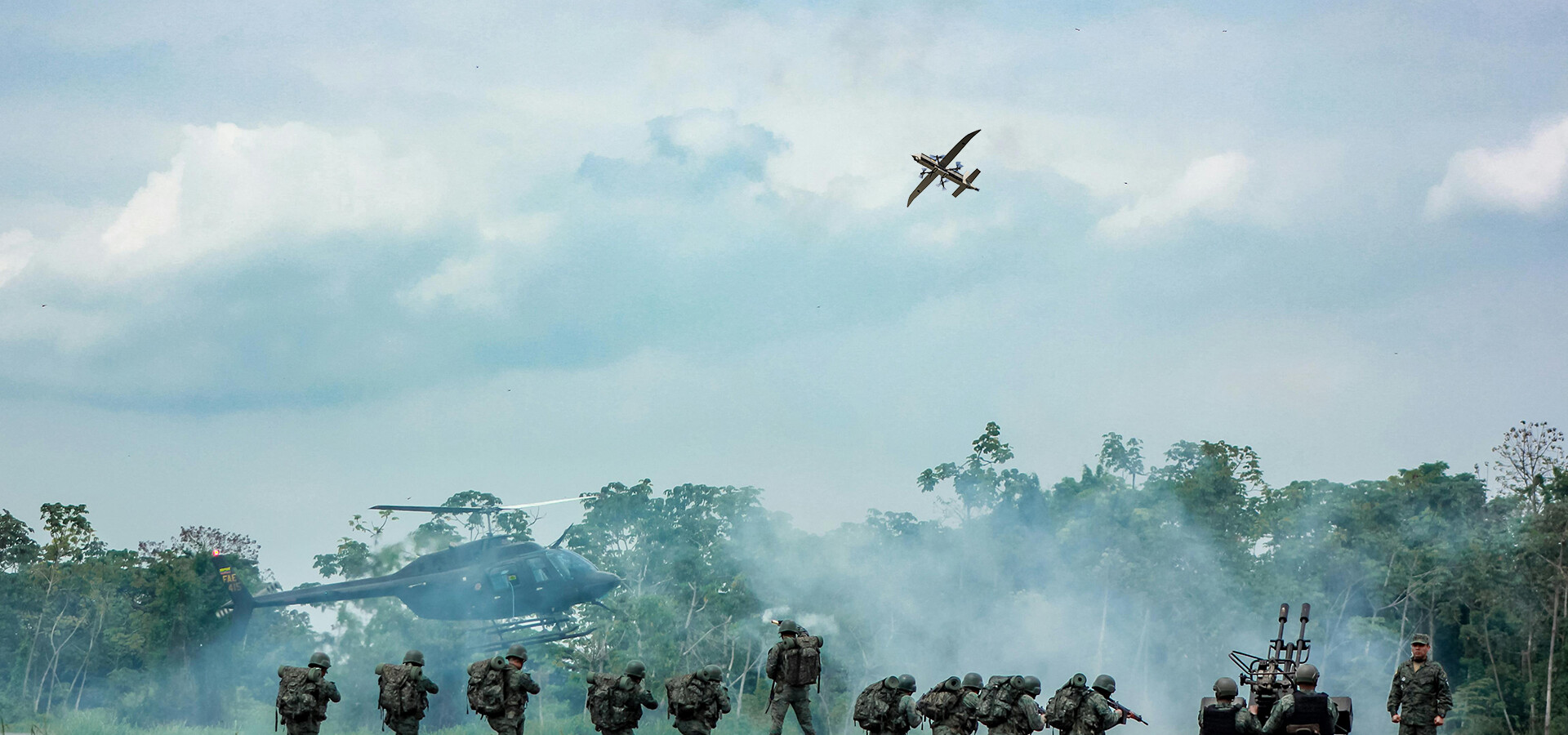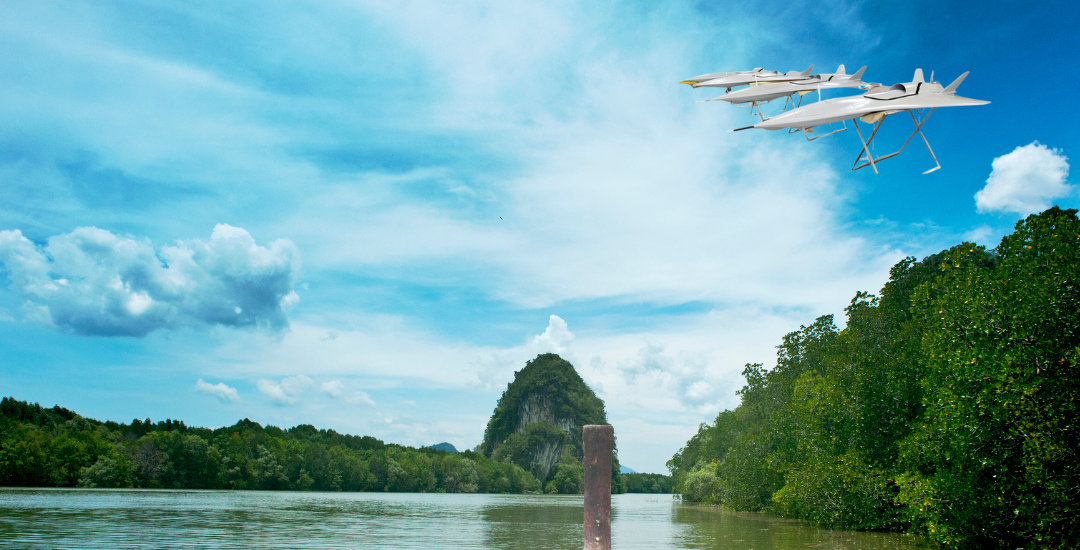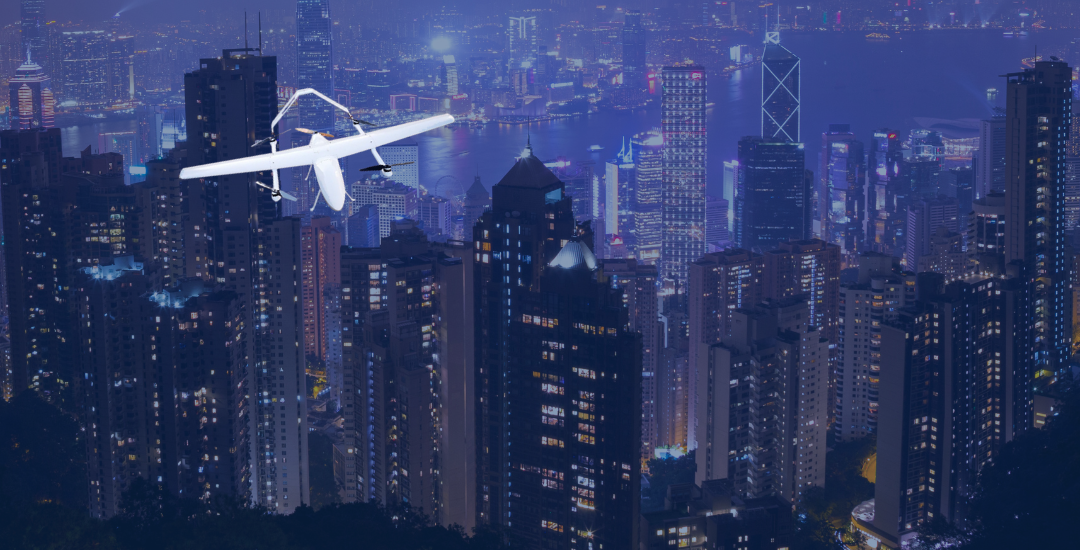NEWS
Home > News

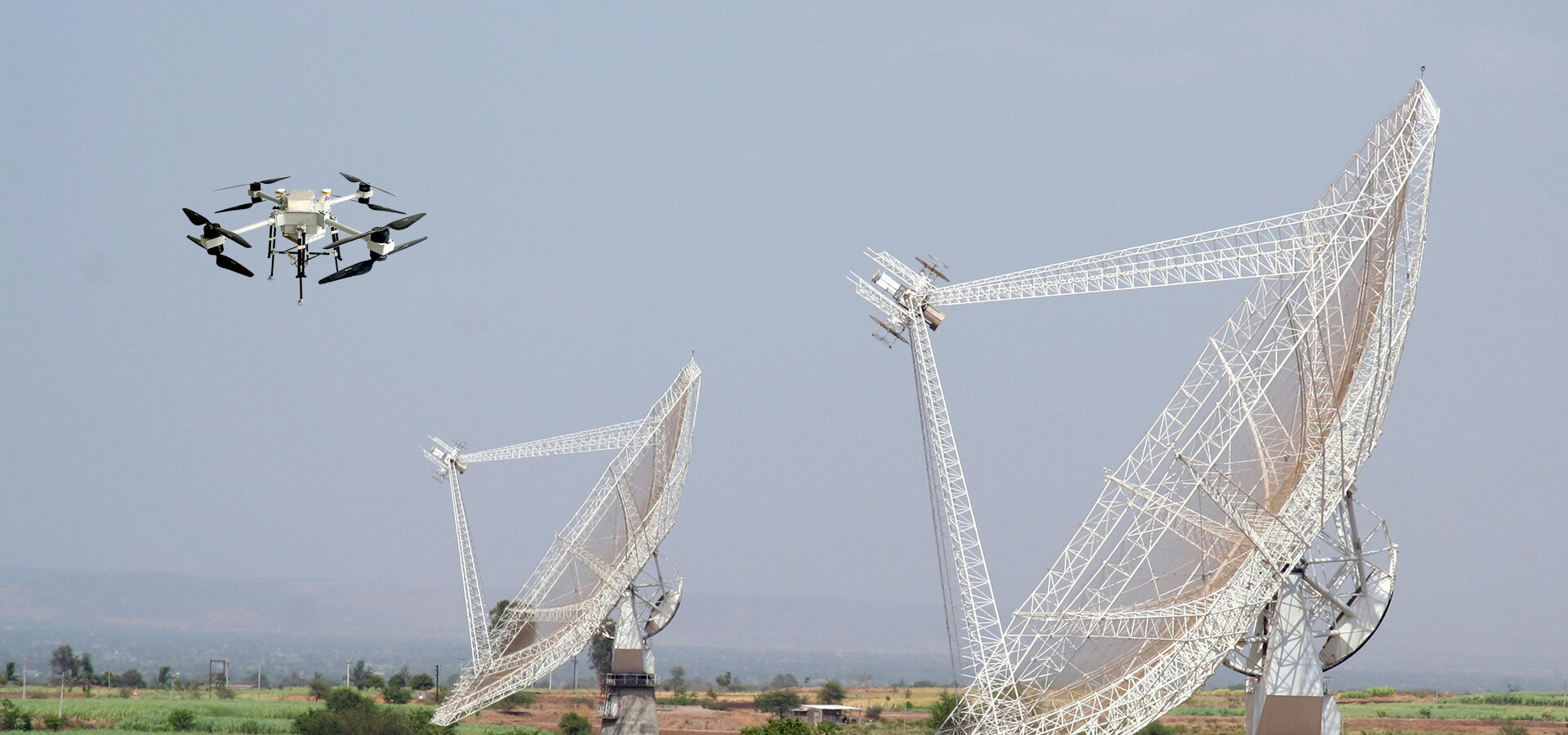
Introduction to Drones
Drones, formerly known as Unmanned Aerial Vehicles (UAVs), represent a rapidly growing sector in aviation. From hobbyist drones for recreation to highly advanced military drones capable of surveillance and combat, drone technology has evolved drastically over the last few decades. Drones are now revolutionizing industries like agriculture, logistics, military, and environmental monitoring. This blog will delve into specific categories of drones, including fixed-wing drones, Vertical Takeoff and Landing (VTOL) drones, military drones, and hybrid-wing VTOL drones, exploring their technology, applications, and advantages.
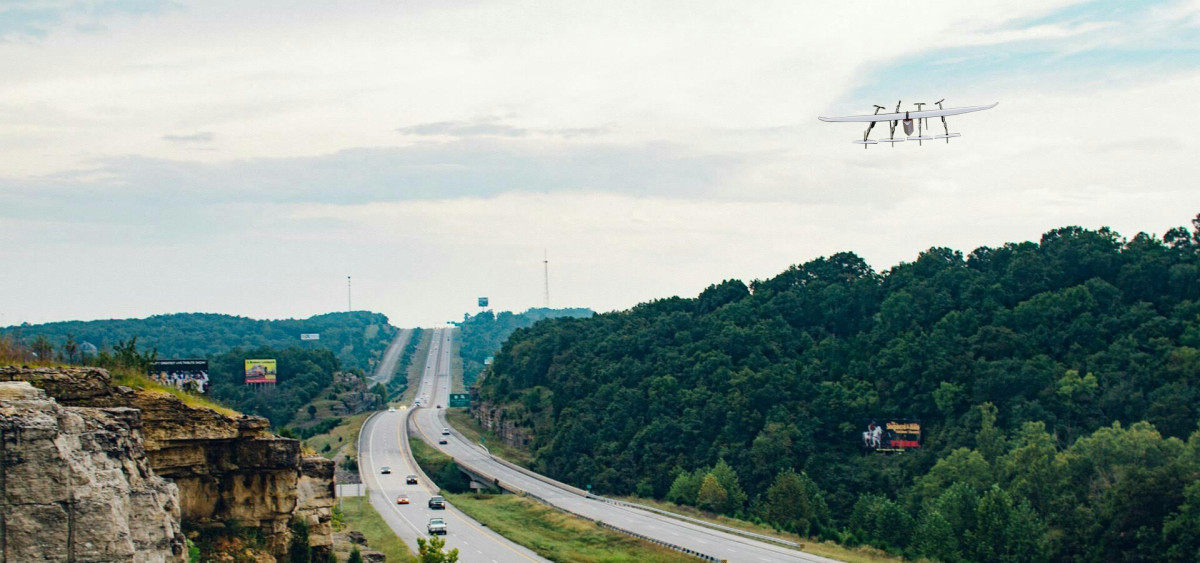
Long Range Fixed Wing UAV
Long Range Fixed Wing UAVs are designed like traditional airplanes, with rigid wings that generate lift as the drone moves forward. Unlike rotor-based drones, which hover in place using spinning propellers, fixed-wing UAVs are more suited for long-range and high-speed operations. This type of drone has been utilized extensively in sectors where endurance and efficiency are critical. These drones typically require a runway or catapult system for launch and a recovery area for landing, but their ability to cover vast distances with minimal energy consumption makes them invaluable for certain missions.
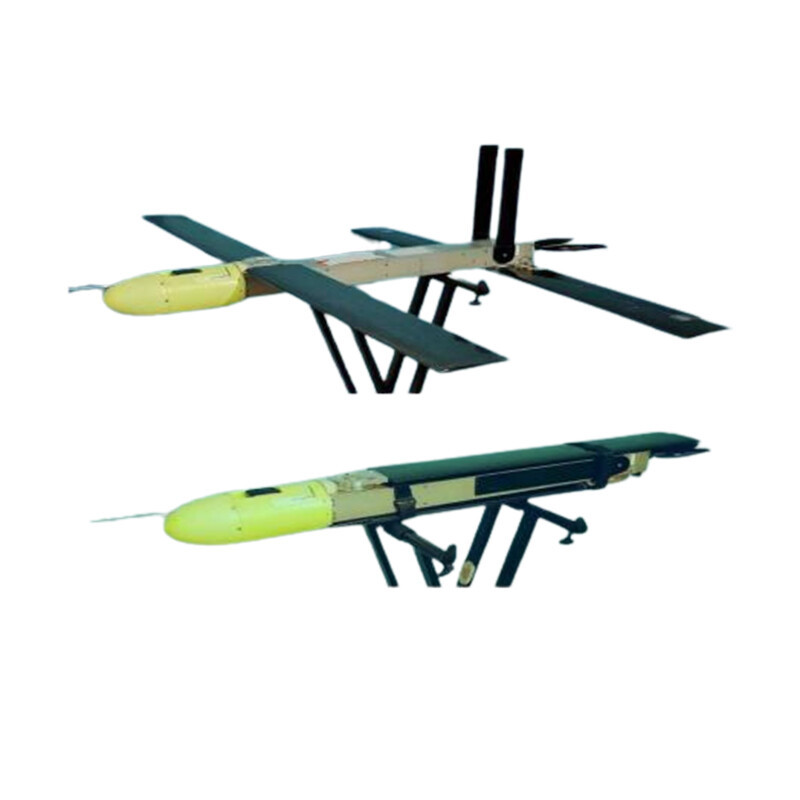
Key Features of Fixed-Wing Drones:
- Long Endurance: Fixed-wing drones can fly for several hours or even days due to their aerodynamic design.
- Higher Speeds: They achieve higher cruising speeds compared to multi-rotor drones.
- Energy Efficiency: Using the aerodynamics of a wing, they consume far less energy during flight.
- Large Payload Capacity: Fixed-wing UAVs can carry significant payloads, including cameras, sensors, and communications equipment.
Fixed-Wing Drones in Commercial Use
Fixed-wing UAVs are widely employed in sectors such as agriculture, where they cover large fields for crop monitoring, irrigation management, and pest detection. In logistics, they enable long-distance delivery, particularly in remote areas where road infrastructure is insufficient. Fixed-wing drones also play a crucial role in surveying and mapping, capable of quickly gathering high-resolution images over large landscapes. The precision and scalability offered by these drones are essential for tasks like environmental monitoring, where they track changes over vast regions efficiently.

VTOL UAV-Vertical Takeoff and Landing Drones
VTOL drones represent a blend of fixed-wing efficiency with the versatility of rotary-wing aircraft. These drones take off and land vertically like helicopters but switch to fixed-wing mode during forward flight. The transition from vertical lift to horizontal flight provides the best of both worlds: the ability to take off and land in confined spaces, combined with the aerodynamic efficiency of fixed-wing drones.
Key Features of VTOL Drones:
- Versatile Operation: Can take off from and land in confined areas without needing a runway.
- Efficient Cruise: During forward flight, they switch to fixed-wing mode, reducing energy consumption.
- Wide Range of Applications: Suitable for both commercial and military operations.
- Improved Accessibility: VTOL drones are ideal for locations where traditional fixed-wing drones can't operate due to space constraints.
Applications of VTOL Drones
VTOL drones are proving invaluable in industries such as oil and gas, where they inspect offshore platforms and pipelines. Their ability to hover and then transition to forward flight makes them perfect for power line inspections, wildlife monitoring, and search-and-rescue missions. With their combination of endurance and vertical takeoff capability, they are well-suited for geographic areas that are difficult to access or for industrial operations requiring precision inspections over long distances.
Advantages of VTOL Drones
The main advantage of VTOL drones is that they can take off and land in tight spaces like a helicopter, but once airborne, they transition to fixed-wing flight, achieving longer endurance and higher speeds. This combination makes VTOL UAVs particularly useful in scenarios where both agility and efficiency are required. VTOL technology bridges the gap between rotor-based and fixed-wing drones, providing a highly versatile platform for multiple applications.
Military UAV: An Overview
Military UAV, also known as Unmanned Combat Aerial Vehicles (UCAVs), have transformed modern warfare. These drones come in various shapes and sizes, from small reconnaissance UAVs to large armed drones used for precision strikes. Military drones perform a wide range of functions, including intelligence gathering, surveillance, reconnaissance, and offensive operations. Their ability to operate without risking human lives makes them a critical asset on the battlefield.
Categories of Military UAV
Military drones are broadly classified into:
- Surveillance Drones: Used for intelligence gathering, these drones provide real-time imagery and data on enemy positions.
- Reconnaissance Drones: Larger, more sophisticated drones that cover vast areas, providing detailed information about enemy movements and terrain.
- Combat Drones: Armed drones that can carry missiles or bombs, used for precision strikes against enemy targets.
Use of Fixed-Wing Drones in the Military
Fixed-wing drones are favored by military forces for their long-endurance capabilities. They can be equipped with high-resolution cameras and sensors to gather intelligence over large areas, sometimes staying aloft for days. In combat scenarios, fixed-wing drones perform surveillance, reconnaissance, and even offensive operations. Some military fixed-wing UAVs, like the MQ-9 Reaper, are capable of carrying out precise attacks while simultaneously conducting reconnaissance.
The Rise of VTOL UAVs in Military Applications
VTOL drones are becoming increasingly important in military applications, especially in regions where fixed-wing UAVs are impractical due to the lack of runways or the need for rapid deployment. The ability to take off vertically and then fly efficiently makes VTOL drones perfect for missions that demand both agility and endurance. These drones are often used for tactical missions where speed and the ability to hover in place are critical.
Hybrid-Wing VTOL Drones
Hybrid-wing VTOL drones combine the vertical lift of a helicopter with the horizontal flight capabilities of a fixed-wing aircraft. These drones feature both fixed wings and vertical lift propellers, allowing for a seamless transition between hovering and forward flight. Hybrid-wing drones are particularly innovative because they integrate the strengths of both flight modes, offering exceptional versatility in both civilian and military applications.
Key Features of Hybrid-Wing VTOL Drones:
- Seamless Mode Transitions: Ability to switch between vertical takeoff and fixed-wing flight for longer endurance.
- Multifunctional Design: Combines advantages of both rotor and fixed-wing drones.
- Wider Application Range: Suitable for urban operations, military use, and scientific exploration.
Military Use of Hybrid-Wing VTOL Drones
Hybrid-wing VTOL drones are gaining traction in military operations due to their adaptability and efficiency. They can be used for reconnaissance, target acquisition, and combat support. The U.S. military, for instance, has begun integrating hybrid VTOL drones for missions where rapid deployment and long-distance coverage are crucial. These drones can quickly take off from confined areas and then fly long distances in fixed-wing mode, making them perfect for both urban and remote combat scenarios.
Future of Drone Technology
The future of drone technology lies in increased automation, AI-driven operations, and enhanced energy efficiency. Drones will likely become more autonomous, reducing the need for human intervention and increasing mission effectiveness. The integration of AI will allow drones to process data in real-time, making them smarter and more responsive to changing environments. The use of alternative energy sources, such as solar power, will also extend flight times and reduce operational costs.
Challenges in Drone Development
Despite the impressive advancements in drone technology, there are still several challenges to overcome. These include regulatory barriers, such as restrictions on airspace use, as well as technical challenges like energy efficiency and battery life. For military drones, ensuring the security and encryption of communication links remains a top priority to prevent hacking or signal jamming. As drones become more integrated into commercial and military operations, addressing these challenges will be crucial for their continued success.
Conclusion
Drones are reshaping the landscape of aviation, with fixed-wing drones, VTOL UAVs, and hybrid-wing drones leading the charge in both civilian and military sectors. Their versatility, endurance, and efficiency make them indispensable tools for industries ranging from agriculture to defense. As drone technology continues to evolve, we can expect even greater advancements in autonomy, endurance, and multi-functional capabilities, driving the future of both aviation and robotics.
SHARE:
Send a Message
RECENT POSTS
 How VTOL Drones Are Transforming Delivery Services2025-03-28
How VTOL Drones Are Transforming Delivery Services2025-03-28 VTOL Drones vs. Fixed-Wing & Multirotor: Pros and Cons2025-03-21
VTOL Drones vs. Fixed-Wing & Multirotor: Pros and Cons2025-03-21 Top 10 Safety Tips for Operating VTOL UAVs in Urban Areas2025-03-14
Top 10 Safety Tips for Operating VTOL UAVs in Urban Areas2025-03-14 Choosing the Right Fixed-Wing UAV for Your Needs2025-03-07
Choosing the Right Fixed-Wing UAV for Your Needs2025-03-07 What Is a VTOL Aircraft? A Beginner’s Guide2025-02-24
What Is a VTOL Aircraft? A Beginner’s Guide2025-02-24
Get in Touch
Please use the form below to get in touch.
If you need a reply we will get in touch as soon as possible.

